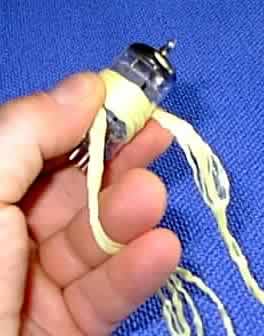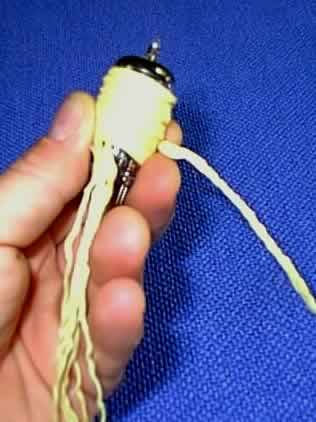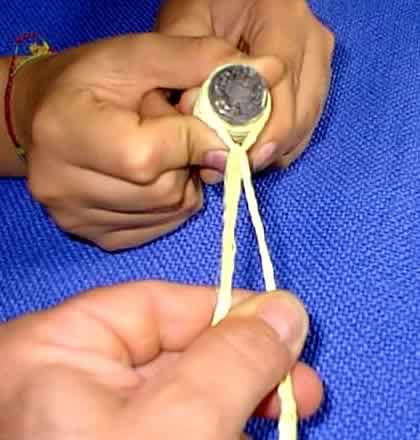
Product: TNT-Audio K-Sox tube dampers
Manufacturer: Not for
sale, do it yourself!
Approx. price: 3 $/meter
Author: Mimmo Cacciapaglia

If you are a tube sound hardcore addict, you surely know tubes are
microphonic, i.e. tend to capture airborne vibrations and amplify them through
your system.
The HiFi market is crazily full of HiFi accessories that should
help minimizing this annoying problem on tube preamps and power amps. Normally,
they don't come cheap.
So here comes your beloved TNT-Audio online help
:-)
We'll tell you how to home-build your own Kevlar® dampers for your tubes at a cost that will make your
wallet sing and dance (5 $).
Now, I'm talking about Kevlar® here, so the first thing to do is FIND the Kevlar® fibers...no, don't fret, this is going to be EAAAASY...
|
|
Just go to your nearest boating supplies & sailing hardware store
and ask for a piece of Kevlar®-core line for halyards (6 mm). Even if you
don't know what you're saying, don't worry, they'll understand what you mean
:-)
Even better, show some deep knowledge in the field and ask for Marlow Ropes stuff...(IMHO, the best
ones)
The salesman will think you're a real expert and will go on asking you
"Which kind of boat do you have???" Now you should answer: A Sovtek EL 34
:-)
The guy will argue you're talking about a fine 34 feet sloop and will
treat you gently :-)
The next question will be: "How many feet/meters do you
need?". Now, have a look at the rope, it should have a yellow core (that's pure
Kevlar®!!!). If so, ask for just 2 meters. The guy will suddenly understand you
will use it for something else, but the price will remain the same: 3$ per
meter, more or less. The same stuff will cost you an arm and a leg at your HiFi
dealer ;-)
|
|
If you live near the mountains and sailing hardware isn't all that easy to find...ask at your nearest mountain supplies & hardware store, they should have Kevlar®-core ropes in stock as well. If you leave far from the mountains and far from the sea...well, please don't ask me where to find this stuff...:-)
And now let the fun begin: start to "extract" the Kevlar® core out of the
rope, a light traction should do the trick.
You will get several strands of
Kevlar® fibers, braided together, probably three by three. Just pick one long
fiber up and you're done: you have exactly what you need to build your own
TNT K-Sox.


Once you've reached the top of the tube you need to go down again, so to
properly cover any blank space left out while going "up" the first time.
Now
that you've finished you need to glue the two ends together. Do not try to make
a knot, because Kevlar® fibers are HARD to be knotted. So use a drop of
cianoacrylic glue and cut any excess of fiber with strong scissors. You've been
warned: Kevlar® fibers are tough, my friends!

If you're good enough at "wrapping" the end result should look like the picture on top of this page. If it looks like something else (an ancient ugly egyptian mummy, for example) you need to start again. Patience is the key.
© Copyright 2000 Mimmo Cacciapaglia - www.tnt-audio.com
How to print this article
DuPont™ and KEVLAR® are registered trademarks or trademarks of DuPont or its affiliates.